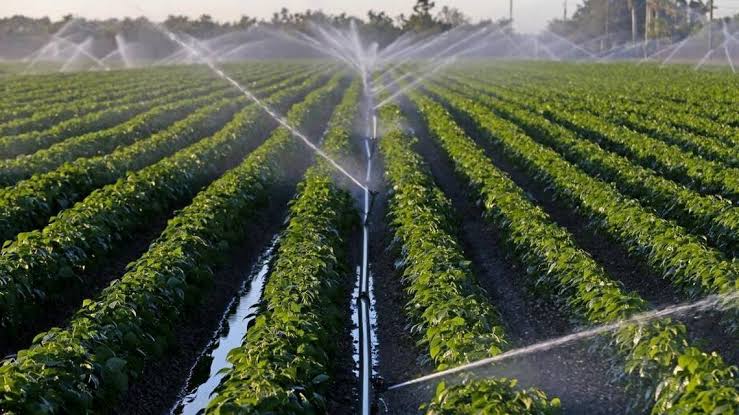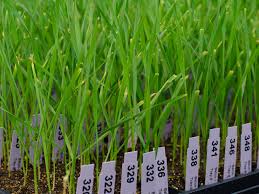Climate Change and Agriculture
Climate change is a big problem for agriculture. Climate change means the weather is getting different over a long time. This can make it hard for farmers to grow crops and raise animals. Let’s talk about how climate change affects agriculture and what we can do about it.
First, let’s talk about the problems. Climate change makes the weather strange. Sometimes it’s too hot, and sometimes it’s too cold. Sometimes there is too much rain, and sometimes there is not enough. This makes it hard for farmers to know when to plant and when to harvest their crops. It can also make it hard for animals to find food.
Another problem is that climate change can make pests and diseases worse. When it’s warmer, some pests like insects and fungi can grow more and hurt the crops. This means farmers need to use more pesticides, which can be bad for the environment.
Climate change can also make water scarce. Some places might not get enough rain, so there is not enough water for the crops. This can lead to droughts, which can make it very hard for farmers to grow food.
But there are things we can do to help. We can use technology to predict the weather better. This can help farmers know when to plant and harvest. We can also develop new crops that can survive in different weather conditions. Scientists are working on this to make sure we have enough food in the future.
Farmers can also use practices that are good for the environment. They can use less water and be careful with pesticides. This can help protect the land and the animals. People can help by using less energy and reducing pollution. This can slow down climate change. We can also support local farmers and buy food that is grown in a sustainable way.
Climate change is a big problem for agriculture. It makes the weather strange and can hurt crops and animals. But by using technology, developing new crops, and being kind to the environment, we can help farmers grow food and protect our planet. It’s important for all of us to work together to make a better future for agriculture and for everyone.
Read Also: Pitbulls Dog Breed: Description and Complete Care Guide
The Challenges of Climate Change to Agriculture

Climate change poses several challenges to agriculture. These challenges are important to understand because they can have a big impact on our food supply and the livelihoods of farmers. Here are some of the main challenges:
1. Changing Weather Patterns: Climate change leads to unpredictable and extreme weather events, such as droughts, floods, hurricanes, and heatwaves. These events can damage crops, disrupt planting and harvesting schedules, and make it difficult for farmers to plan ahead.
2. Altered Growing Seasons: Rising temperatures and shifting weather patterns can change the traditional growing seasons for crops. Some areas may experience warmer winters, allowing for longer growing periods, while others may face shorter and less predictable seasons.
3. Water Scarcity: Changes in precipitation patterns can lead to water scarcity in many regions. Lack of water can reduce crop yields and make it challenging to maintain livestock. Farmers often rely on consistent and adequate water sources for irrigation, and climate change can disrupt this.
4. Increased Pest and Disease Pressure: Warmer temperatures can lead to the proliferation of pests and diseases that affect crops and livestock. This can result in reduced crop quality and quantity, as well as increased costs for pest control measures.
5. Soil Erosion and Degradation: More intense rainfall events can increase the risk of soil erosion, which can lead to reduced soil fertility and productivity. Climate change can also alter soil conditions, making it harder for certain crops to grow successfully.
6. Crop Failures and Food Security: When extreme weather events occur more frequently, they can lead to crop failures and food shortages. This can affect food prices and availability, particularly in vulnerable regions.
7. Loss of Biodiversity: Climate change can disrupt ecosystems and habitats, affecting the natural pollinators and beneficial organisms that are essential for agriculture. This loss of biodiversity can make farming less sustainable.
8. Increased Costs: Adaptation to climate change often requires investment in new technologies, practices, and infrastructure. These changes can be costly for farmers and may require government support and policies to be viable.
9. Migration and Livelihood Challenges: In some cases, climate change impacts on agriculture can lead to rural-to-urban migration as farming becomes less viable. This can put additional stress on urban infrastructure and services.
10. Global Trade Disruptions: Climate-related disruptions in agriculture can affect international food trade, potentially leading to price volatility and supply chain challenges.
It’s crucial to address these challenges through sustainable agricultural practices, better water management, resilient crop varieties, and policies that support farmers in adapting to a changing climate. Additionally, reducing greenhouse gas emissions is vital to mitigating the severity of climate change and its impacts on agriculture.
Read Also: Boxer Dogs: Description and Complete Care Guide
Possible Solutions of Climate Change to Agriculture

Solving the challenges of climate change in agriculture requires a multi-faceted approach that combines mitigation and adaptation strategies. Here are some key solutions:
Mitigation Strategies
1. Reducing Greenhouse Gas Emissions: Agriculture is a significant contributor to greenhouse gas emissions, primarily through methane from livestock and nitrous oxide from fertilizers. Implementing practices like improved livestock management, reduced use of synthetic fertilizers, and precision agriculture can help reduce emissions.
2. Renewable Energy: Transitioning to renewable energy sources for farm operations, such as solar and wind power, can reduce the carbon footprint of agriculture.
3. Sustainable Land Use: Avoiding deforestation and promoting reforestation and afforestation can sequester carbon dioxide from the atmosphere. Implementing agroforestry practices that combine trees and crops can also enhance carbon storage in soils.
4. Reduced Food Waste: Reducing food waste at the production, distribution, and consumption levels can help minimize emissions associated with food production.
Adaptation Strategies
1. Climate-Resilient Crop Varieties: Developing and adopting crop varieties that are more resilient to changing weather conditions, pests, and diseases can help ensure stable yields.
2. Improved Water Management: Implementing efficient irrigation systems and water conservation practices can help farmers adapt to changing precipitation patterns and water scarcity.
3. Crop Rotation and Diversification: Crop rotation and diversification can help reduce the risk of crop failures due to changing conditions and pests. It can also improve soil health.
4. Advanced Weather Forecasting: Using modern technology and weather forecasting tools, farmers can make informed decisions about planting, harvesting, and managing their crops and livestock.
5. Soil Health: Promoting practices like no-till farming, cover cropping, and organic matter addition can enhance soil fertility and resilience, making it more resistant to erosion and better at retaining moisture.
6. Integrated Pest Management: Adopting integrated pest management practices reduces the reliance on chemical pesticides and promotes natural pest control methods.
7. Insurance and Risk Management: Governments and organizations can provide insurance and risk management tools to help farmers cope with the financial impacts of climate-related disasters.
8. Education and Training: Providing farmers with access to training and information on climate-smart agricultural practices can empower them to adapt effectively.
Policy and Global Collaboration
1. Supportive Policies: Governments can enact policies that incentivize climate-smart agriculture, such as providing subsidies for sustainable practices and carbon markets for farmers to benefit from carbon sequestration.
2. International Cooperation: Climate change is a global issue, and international collaboration is crucial. Sharing knowledge, technology, and resources can help develop effective solutions for agriculture in different regions.
3. Research and Innovation: Continued investment in research and innovation in agriculture is essential to develop new technologies and practices that can enhance resilience and reduce emissions.
In conclusion, addressing climate change in agriculture requires a combination of mitigation efforts to reduce emissions and adaptation strategies to build resilience.
It’s a complex challenge that necessitates the involvement of governments, farmers, researchers, and the global community working together to secure our food supply while protecting the environment.
Read Also: America Waste Disposal: What You Need to Know









